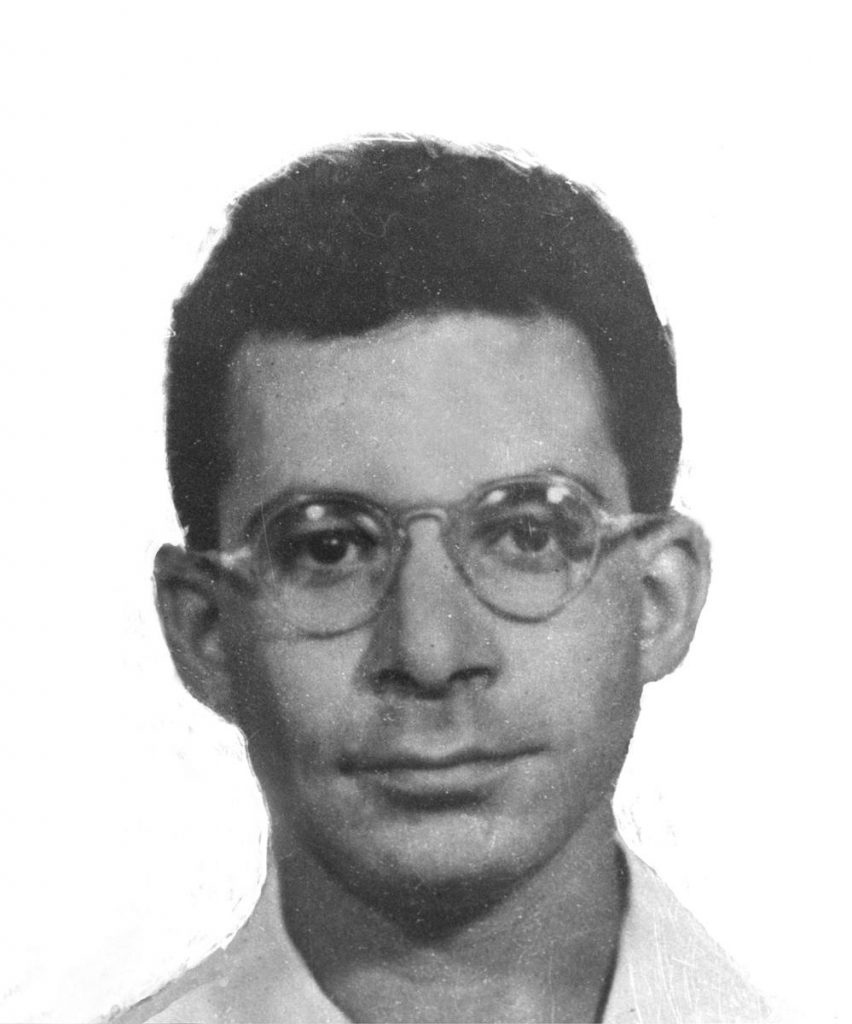Louis Slotin (1910-1946) was a Canadian physicist. Shortly after World War II, he died from radiation sickness contracted during a dangerous experiment conducted at Los Alamos.
Slotin received his Bachelor of Science and Master of Science from the University of Manitoba in 1932 and 1933, respectively. in July 1936, he was awarded a London University doctorate in bio-chemistry. He won a prize for his thesis, entitled “An Investigation into the Intermediate Formation of Unstable Molecules During some Chemical Reactions”. He later took a job as a research associate in Enrico Fermi’s lab at the University of Chicago, where he was assigned to work on cyclotrons.
In 1942, he was assigned to the Manhattan District, working at Chicago’s Metallurgical Laboratory. He was present on December 2nd, 1942 when Chicago Pile 1, the world’s first artifical nuclear reactor, went live. In December of 1944, Slotin was relocated to Los Alamos, to work in Robert Bacher’s Weapon Physics Division. He had previously done work at Oak Ridge with Eugene Wigner on plutonium production.
At Los Alamos, Slotin developed a reputation as a skilled bomb assembler, especially capable at putting together the bomb’s firing mechanism. He assembled the core of the Gadget, the bomb used at the Trinity test in 1945. He was also responsible for conducting criticality tests, which were used to determine the critical mass values of fissile materials. If something went wrong, such experiments could result in nuclear fission. Because of their danger, criticality tests were often referred to as “tickling the dragon’s tail.”
“Tickling the Dragon’s Tail”
Slotin remained at Los Alamos after the end of the war. On May 21, 1946, he was in the process of conducting a criticality experiment to teach his colleague and eventual replacement, Alvin C. Graves, how they were done. The experiment involved slowly bringing together two berrylium-coated half spheres around a plutonium core, without allowing the two halves to touch. Slotin was using a screwdriver to keep the two spheres separated. As he slowly brought the two halves together, the screwdriver suddenly slipped; a bright blue flash filled the room. Slotin at once threw his body in front of the sphere, to shield his fellow scientists, and yanked the two half-spheres apart. In the process, he received almost 1000 rads of radiation, far over the lethal dose.
Slotin died 9 days later, after suffering the effects of radiation poisoning. His death led to increased safety standards in nuclear laboratories, as well as commendations for his heroic sacrifice to save the other scientists.





